This ocean sensory bin is one of our favorite summer activities for preschoolers and kindergarten kids! It engages the children’s senses and inspires all kinds of imaginative play.
I originally put this bin together for one of my preschool’s summer camps. But I think it would work for any time of the year. Perhaps during your next kindergarten or preschool ocean theme or a unit about sharks?
Sensory play really doesn’t have to be overly complicated, and this under the sea sensory bin proves that point. It only needs two materials, and it can keep the kids engaged for HOURS. Yes, I said hours!
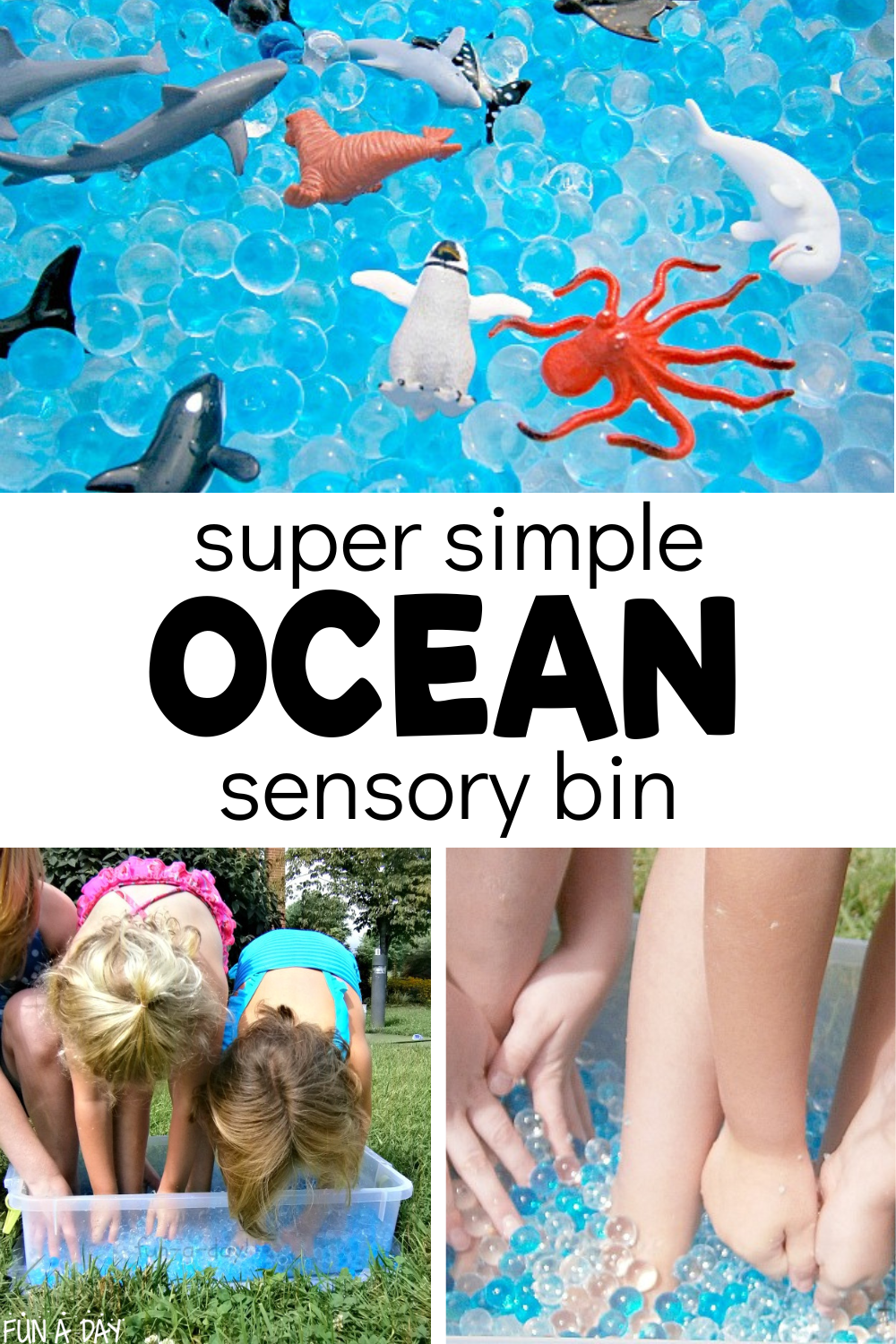
Related: Simple Sensory Activities
I have to tell you that this appealed to kids of all ages! The 4 and 5-year old campers, the 6 and 8-year old camp assistants, and the 30-something teachers all got their hands into the ocean sensory play.
Ocean Sensory Bin
Read below for prepping tips, as well as some ideas for using the ocean-themed sensory bin. I’ll share the ways we’ve used it over the years. But please keep in mind that you can tweak this idea to best meet the needs of your students!
Speaking of, I do want to point out that this bin contains water beads. Water beads are not at all suitable for anyone who still puts things in their mouths. If your children might do so, please replace the water beads with a material better suited for their ages and needs.
How to Assemble the Under the Sea Sensory Bin
Start off by gathering the materials you’d like to use. Here are the TWO items we used (I may get commissions for purchases made through links in this post):
Like I said, just two materials for hours of ocean-themed fun! You can use something like dyed rice or chickpeas for the base if that’s easier for you. Or even just some water with a drop or two of food coloring.
To put the bin together, just:
- Hydrate the water beads in a large container.
- Place ocean animals into the water beads.
Don’t be afraid to let the kids help you put the ocean sensory play together. My son helped me the very first time we made the ocean sensory bin. We chose both clear and blue water beads simply because we didn’t have enough blue! Once the beads were hydrated, we poured them into a long plastic bin with a top.
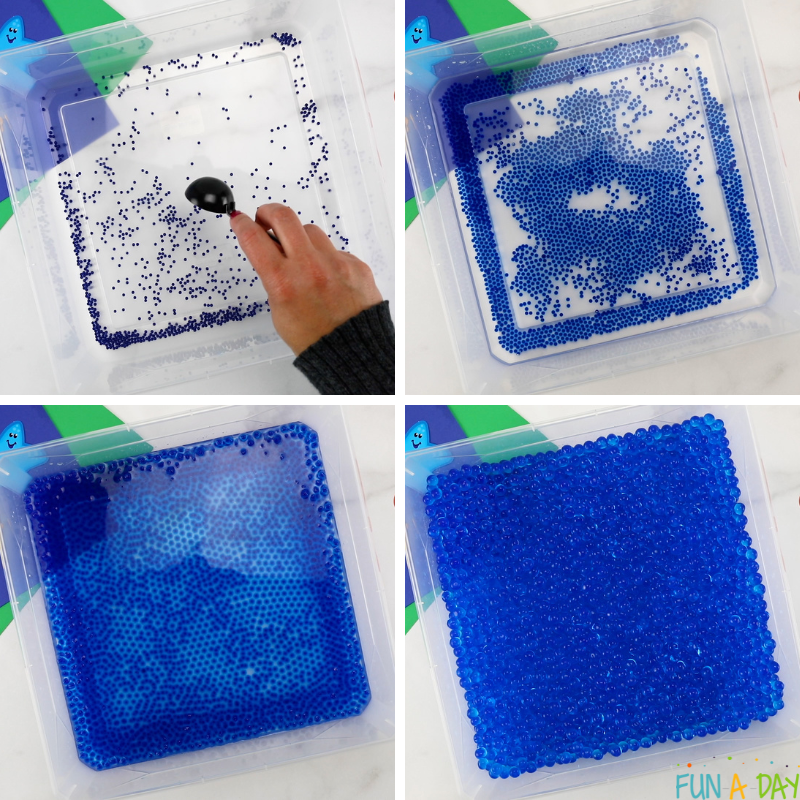
When we got to the preschool, we placed a variety of small animals in with the water beads. He chose whales, sharks, baby ocean animals, as well as variety of other sea animals. It was an incredibly crowded ocean, but the children didn’t seem to mind one bit.
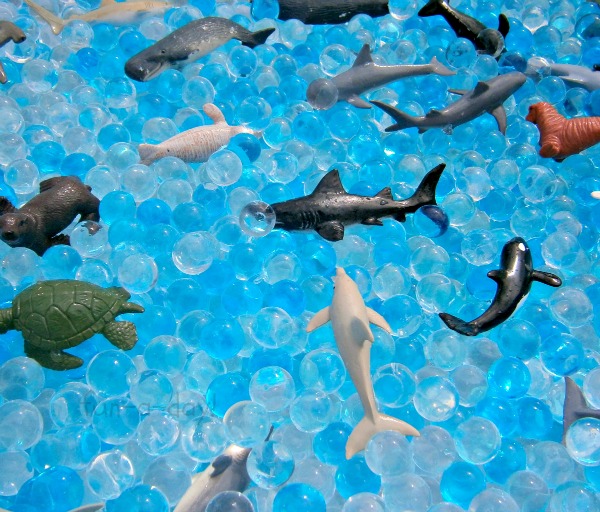
We had a nice discussion about the characteristics of sharks versus whales as my son added the animals. It’s always nice to listen to his questions and see how much he’s learned through our adventures.
Take a look at a video that shows how you can make your own ocean sensory bin:
How the Kids Played with the Sea Sensory Bin
The first day of camp, I gave the kiddos basic instructions regarding the ocean sensory bin. Please leave the water beads un-squished until the last day of camp, try to keep everything in the bin, and have fun with the ocean animals!
The children were engaged with this bin the entire week of camp. They told stories using the animals, sorted the animals, ran their hands through the water beads, and just enjoyed playing together.
On the last day of camp, we had a Splash Day. The children had been enjoying the ocean sensory bin so much that we decided to bring it outside with us. It’s always nice to have some simple play bins for the kids to use when they want a break from sprinklers and water balloons.
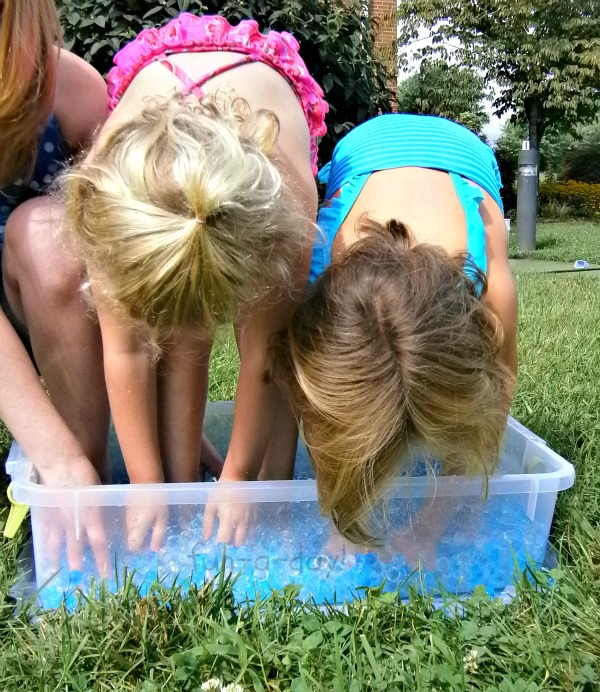
They ended up squishing the beads (after asking me, which was nice), climbing into the beads, and stomping them with their feet. This ended up being a full-body sensory experience for the kids!
Other Ways to Use the Ocean Sensory Tray
We have had tons of fun with different variations of our sea sensory bin since first making it in 2013! As I mentioned earlier, you can make changes as you see fit. Here are a few ways you can change things up:
- Make individual sensory bins for each of the kids in your class. Or use the smaller versions as choice boxes at the beginning of the day.
- Turn the sensory bin into an ocean sensory BOTTLE instead. This would be great for younger kids, especially.
- Add just one type of ocean animal. For example, if you’re teaching a unit focused on sharks, just add shark toys.
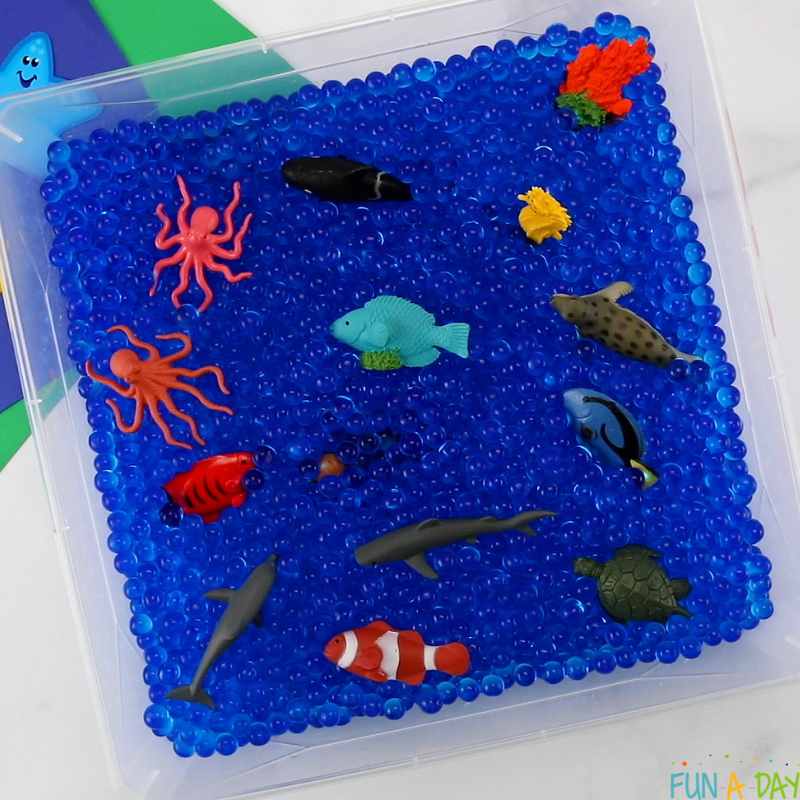
- Hide waterproof letter or number manipulatives in the bin. Challenge your students to find all of them.
- Turn it into a pirate messy play activity that involves “walking the plank” and keeping away from sharks!
- Pair the ocean sensory bin with small nets. Ask your children to fish out all of the ocean animals using the nets.
- Swap out the water beads for another sensory base. Rice, chickpeas, sand, water, or shaving cream would be a lot of fun, too.
As you can see, there are so many ways to adjust the sea sensory play to your preferences and the kids’ needs! Be sure to let me know how your students played in the comments below.
More Ocean Sensory Play Ideas
I thought you might like a few more ocean-themed sensory play ideas. If the ocean sensory bin was a hit, your students might also like these ideas:
- Shark Sensory Bottle
- Toddler Ocean Sensory Play
- Ocean Slime
- Jell-O Ocean Exploration
- Play Sand (a DIY version)
- Mini Aquarium in a Bottle
- Ocean Sensory Bottle
And be sure to check out my Ocean Theme Pinterest board for more ideas for your next ocean unit.
Ocean Lesson Plans
Let Preschool Teacher 101 save you a ton of time with fully-developed, done-for-you early childhood resources. We have hundreds of lesson plans, dramatic play packs, STEM challenges, fine motor activities, math lessons, circle time songs, and so much more. There’s even The Pack, our membership for preschool and kindergarten teachers. Our members have access to our materials at a steep discount.
Click on the image below to get our ocean lesson plans. They come with a weekly overview, detailed daily lesson plans, book suggestions, whole group activities, small group lessons, center ideas, and related printables:
Here are a few more resources related to ocean animals. Click on the images below:
You can also find us on Teachers Pay Teachers.
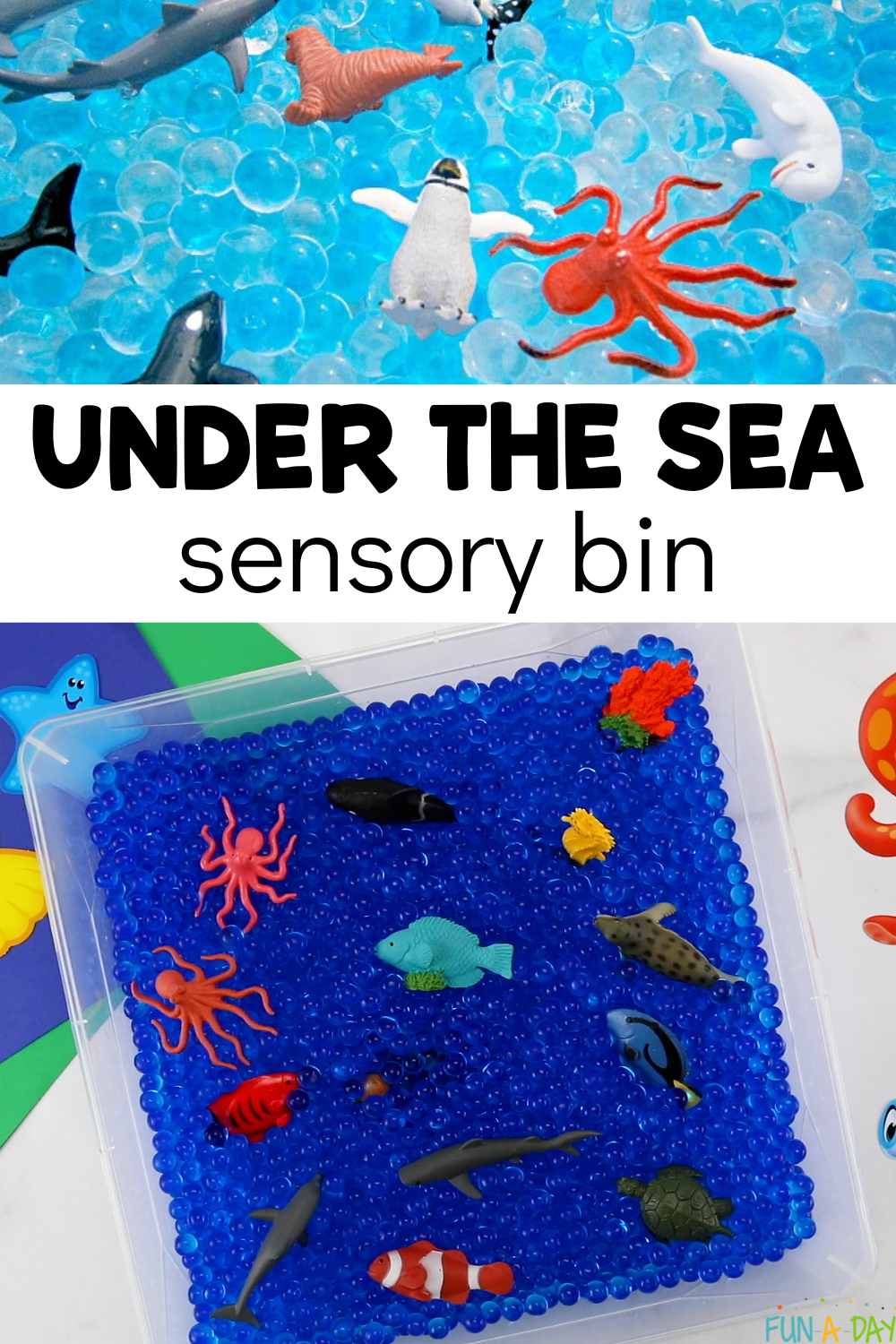
Originally published August 2013.
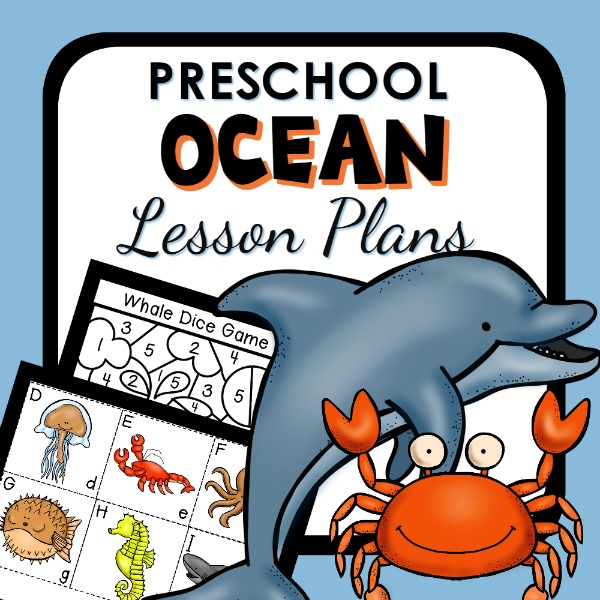
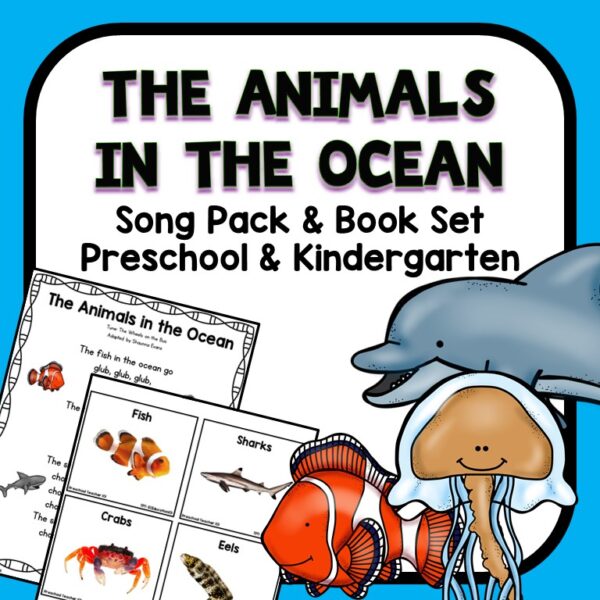
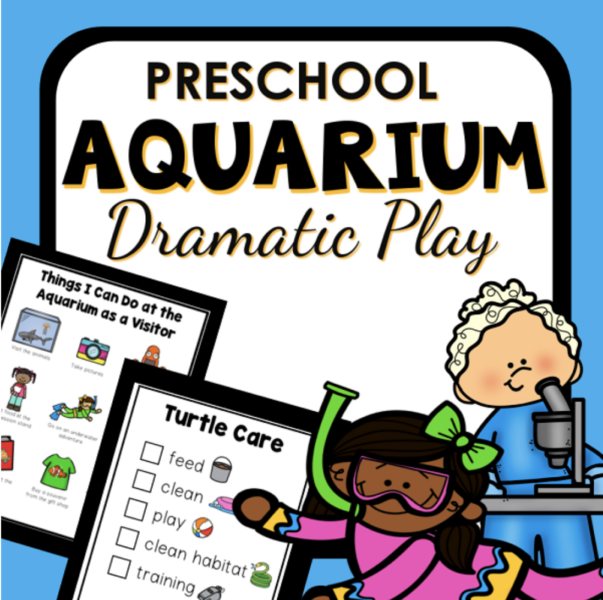
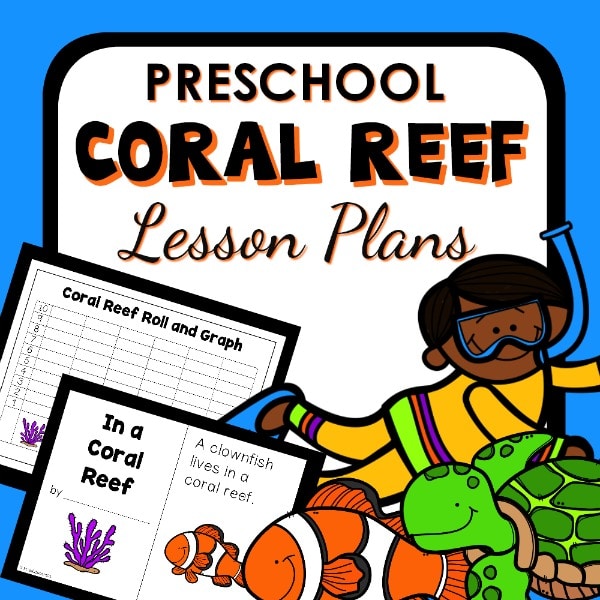
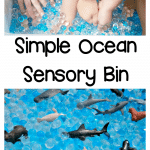
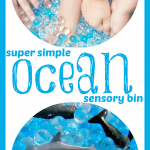
Sometimes the simple activities are the BEST!! Looks like everyone had tons of fun 😉
So true!! Sometimes I get so wrapped up in planning that I forget that. We all had a blast with it!!
I love water beads. You can do so much with them. Looks like everyone had some fun!
Oh, we all had way too much fun, Sarah! I agree, they can be used in a variety of activities. Engineer had a blast last summer with water bead science experiments.
This 40 something teacher wants to get her hands in that bin. So simple and so inviting.
Nice! I’m not the only teacher who likes playing with the water beads too!! 🙂 It always makes me happy when something “easy” is so well-loved by the kiddos. Thanks, Sandi!!
Oh that looks like fun! I know both my girls would enjoy it!
Thanks, Tracey!! 🙂
What a great idea to use those beads! I will have to try this once my baby is old enough to not put everything in his mouth! LOL!
Thanks, Rachel! Yes, there are too many small bits here for the tiny kiddos. But it’s a blast once they’re a little older! 🙂
Thanks for linking this fun post to Tuesday Tots. I’m featuring it this week on Learn with Play at home. 🙂
Wonderful, Debs, thank you! And thanks for hosting Tuesday Tots — great linkup!
aren’t these toxic? And are these the ones they use to decorate plants?
They are toxic and can be used for plants. Use your discretion on whether or not you feel your children are ready to use these. I used them with three years olds. As long you are sitting with them and watching them there should not be a problem. You can role model how to play with them and let the children know about the rules. It is a great sensory activity and feels so cool. Also do not dump them down your sink or toilet, it will clog. Put it in a bag and put them in the garbage.
Thank you, Stacey, for answering Cindy’s question. I agree — they really are an amazing sensory activity! 🙂
Well, it appears that Stacey already answered! Sorry my response was too slow. I agree with what she has to say — kiddos need to be supervised. Young children who put things in their mouths shouldn’t be playing with them. Blog Me Mom has a post about edible “water beads” for kids, and I’ve also heard good things about Crystal Soil’s biodegradable water beads. I usually just grab mine from the flower section of the local craft store, but I’m going to try Crystal Soil soon. Water beads are such a FUN and different sensory experience for the kids! In addition to playing with them, counting them, sorting them . . . many children just love placing their hands and arms in the beads and feeling them. 🙂
thanks all for the quick response!
🙂
Love the simplicity of this and the color combination is so appealing — featuring it in our Discover & Explore round-up this week. Thanks for linking up!
Thanks for the feature, Jacquie! I loved the color of the water beads, too, and the kiddos got SO much play time out of this bin!
Perfect timing! I just got my water beads in the mail today. I have some hydrating now with essential oil. 🙂 Now I want fishies to go with them, lol!
I want to make this for my nephew but wasn’t sure how much of the orbeez I should buy. What do you recommend?
Thanks
That’s great! I hope your nephew enjoys the ocean sensory bin. I’d start with at least one packet of blue water beads and one packet of white water beads. If you have a larger bin, then you can add more. 🙂
I love this and my son too. But what if a child eats the water beads? I want to use them for my pre school but I am afraid if the children eat them.
This activity is only for children who are no longer putting things in their mouths. It is very important that water beads are kept away from children who are still exploring the world with their mouths. Water beads are definitely not okay for kids to eat, ever! I’ve used them with the older preschool children, but I wouldn’t feel comfortable using them with babies or young toddlers.